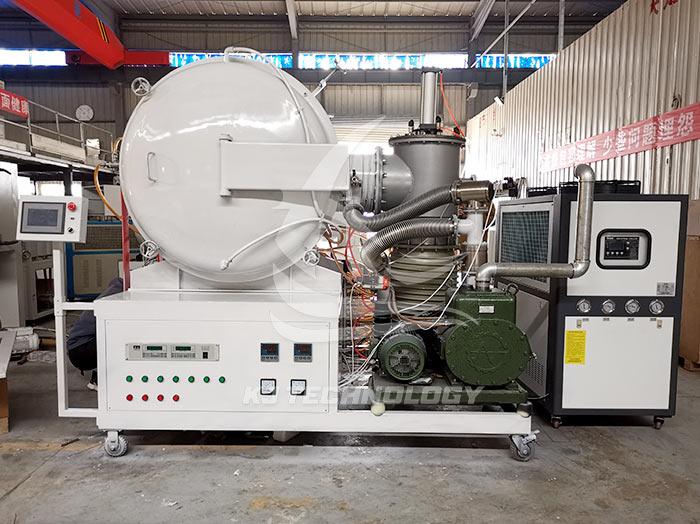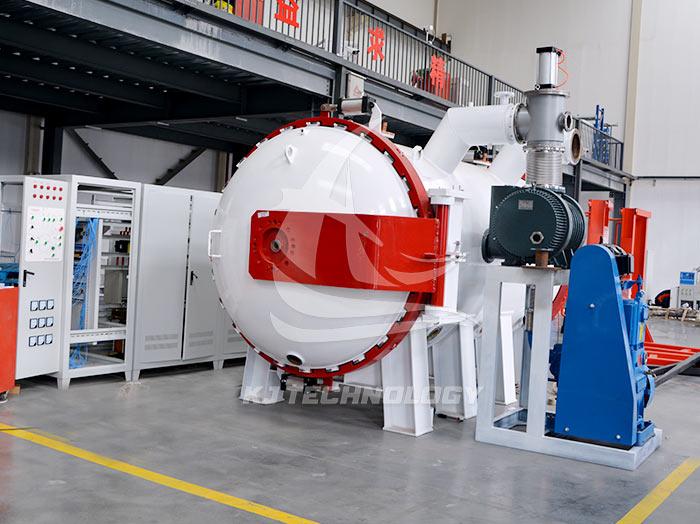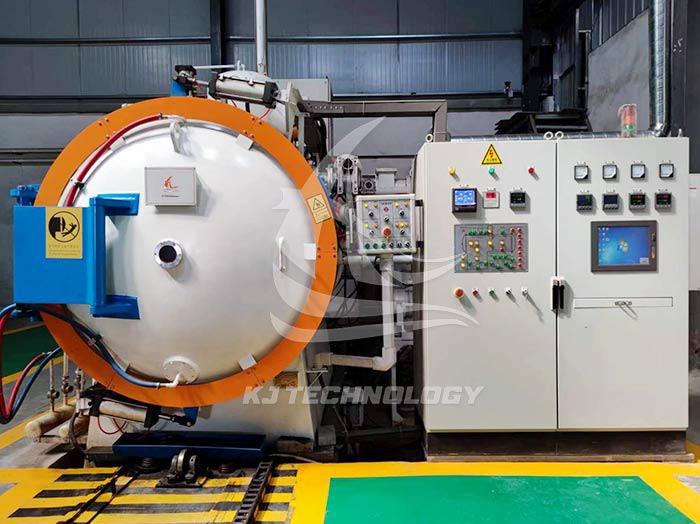Application of Vacuum Muffle Furnace in the New Materials Industry
 08-04-2025 Author: KJ technology
08-04-2025 Author: KJ technology
The vacuum muffle furnace is widely and crucially used in the new materials industry, providing important support for the research and development, preparation, and performance optimization of new materials through the combination of vacuum environment and high temperature control. The following are the specific applications and advantages of vacuum muffle furnace in the new materials industry:
1. Core application scenarios
Preparation of nanomaterials
Application areas: synthesis of nanomaterials such as nanoparticles, nanowires, and nanofilms.
Technological advantages:
Preventing oxidation: Vacuum environment prevents nanomaterials from oxidizing at high temperatures and maintains their intrinsic properties.
Accurate temperature control: Through the PID intelligent temperature control system, temperature fluctuations of ≤± 1 ℃ are achieved to ensure the uniformity of nanomaterial synthesis.
Composite material synthesis
Application areas: Preparation of metal based composite materials (such as aluminum based silicon carbide composite materials) and ceramic based composite materials (such as silicon carbide fiber-reinforced ceramic based composite materials).
Technological advantages:
Preventing interface oxidation: The vacuum environment suppresses the interface oxidation between the matrix and the reinforcing phase (such as carbon fiber and silicon carbide particles), improving the bonding strength.
Promote infiltration: Enhance the wettability of the metal matrix to the reinforcing phase at high temperatures, improving material properties.
Preparation of High Temperature Superconducting Materials
Application areas: Preparation of high-temperature superconducting materials such as yttrium barium copper oxygen (YBCO).
Technological advantages:
Accurate atmosphere control: Supports inert gases (such as argon) or reducing atmospheres (such as hydrogen) to meet the strict requirements of high-temperature superconducting materials for atmosphere.
High temperature stability: It can stably maintain high temperatures above 1000 ℃ and is suitable for sintering processes of high-temperature superconducting materials.
Biomedical Material Processing
Application areas: Sintering of biomedical ceramic materials such as hydroxyapatite (HA) and tricalcium phosphate (TCP).
Technological advantages:
Improving biocompatibility: Vacuum sintering reduces surface pores and lowers the risk of inflammatory reactions after implantation.
Enhance mechanical performance: By high-temperature densification, the bending strength of HA is increased to over 120MPa.
2. Industry Development Trends
Intelligent upgrade: Integrating IoT technology to achieve remote monitoring and real-time analysis of process data (such as automatic optimization of temperature time curves), improving production efficiency.
Green manufacturing: adopting low nitrogen oxide combustion technology to reduce exhaust emissions and meet environmental protection requirements.
Ultra high temperature expansion: Developing graphite heating elements with a maximum temperature of 3000 ℃ to meet the needs of silicon carbide fiber-reinforced ceramic matrix composites and other materials.
Miniature design: In response to laboratory requirements, a miniature vacuum muffle furnace with a volume of ≤ 0.1m ³ has been launched to reduce research costs.








